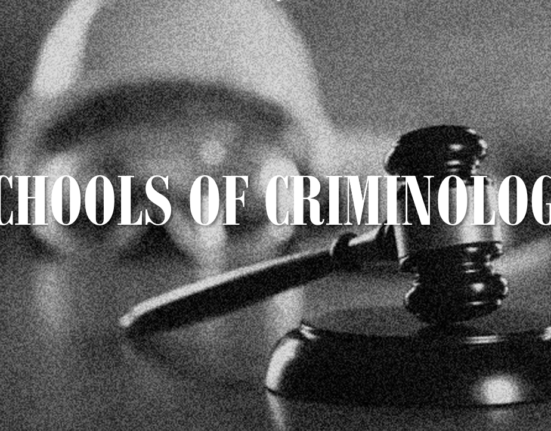H. Aishwarya, a 4th-year B.A.LL.B.(Hons.) student from PES University, Bengaluru has written this Article on “Stages of Crime in Law: A Comprehensive Exploration“
Introduction
Crime, an enduring and intricate facet of human society, has perpetually intrigued and confounded individuals across cultures and epochs. As humanity progresses and societies evolve, the concept of crime has become increasingly intricate, giving rise to a need for a systematic framework to comprehend its multifaceted dimensions. This need has birthed the stages of crime – a conceptual scaffold that dissects the trajectory of criminal conduct into a sequence of discernible phases, each characterized by specific intentions, actions, and consequences. These stages stand as indispensable guideposts, illuminating the intricate journey of unlawful behavior, and serving as a compass for legal experts, scholars, and society at large to navigate the labyrinthine intricacies of criminality.
The evolution of the stages of crime is not merely an academic exercise; rather, it is a response to the perennial quest for understanding the enigma of criminal behavior. It is a testament to the intricate dance between human psychology, ethical considerations, and the legal system’s endeavor to maintain order and justice within a community. As the legal landscape adapts to the dynamic tapestry of societal change, the stages of crime offer a dynamic and adaptable framework that accommodates a multitude of scenarios and intentions.
In essence, the stages of crime are akin to a microscope that allows us to dissect and examine the anatomy of criminal acts. Just as a biologist might explore the cellular composition of living organisms to comprehend their functioning, legal scholars and practitioners delve into the stages of crime to unravel the layers of intent, action, and consequence that characterize unlawful conduct. This exploration extends beyond the mere classification of offenses; it delves into the intricacies of human motivation, decision-making, and culpability – aspects that shape not only the legal response but also society’s perception of crime and punishment.
The journey through the stages of crime encapsulates the very essence of the human experience – from the inception of a thought to its tangible manifestation, and ultimately, its impact on the social fabric. It mirrors the evolution of intent from a mere idea to a concrete plan, the transformation of planning into preparation, and the crossing of the threshold from endeavor to achievement. Each stage weaves a narrative that blends the internal world of cognition with the external world of action, offering insights into the complex interplay between individual agency and societal norms.
As the stages of crime unfurl before us, they reveal not only the patterns of criminal behavior but also the delicate equilibrium that the legal system strives to maintain. The stages serve as a testament to the dynamic interplay between rights and responsibilities, individual freedom and communal harmony, and the quest for retribution and the pursuit of rehabilitation. They underscore the multidimensional nature of crime – a phenomenon that transcends black-and-white categorizations and delves into the vast spectrum of human conduct, motivations, and consequences.
In traversing the landscape of the stages of crime, we embark on a journey of exploration and enlightenment. The stages provide a comprehensive framework for comprehending, categorizing, and addressing criminal behavior – a framework that resonates with the perpetual human endeavor to make sense of the complexities that define our existence. This journey invites us to delve deeper, question assumptions, and ultimately, refine our understanding of not only the stages of crime but also the society in which they operate.
I. Laying the Foundation: Mens Rea and Actus Reus
A. Deciphering the Guilty Mind: Mens Rea
Before delving into the stages of crime, it is essential to illuminate the concept of mens rea – the guilty mind. This foundational element of criminal law hinges on an individual’s mental state or intention while committing an offense. The determination of mens rea varies across different crimes, encompassing a spectrum from specific intent, where the offender consciously desires a particular outcome, to general intent, where the awareness of committing a prohibited act suffices. Unravelling an individual’s intent is a crucial step in navigating the intricate stages of crime.
B. The Tangible Act: Actus Reus
Conjoined with mens rea is actus reus – the guilty act. In the intricate dance of criminal behavior, this element refers to the physical action or conduct that constitutes an offence. For a crime to materialize, both mens rea and actus reus must intertwine, creating a nexus between the intention to commit a crime and the overt act that fulfils that intent. Actus reus may manifest as overt actions, omissions, or even a failure to act when legally required. The stages of crime rely on actus reus as a tangible manifestation of an individual’s intent.
II. Unveiling the Stages of Crime
A. Pondering the Precursors: The Planning Stage
The inception of criminality often germinates in the planning stage, where a malevolent seed takes root within an individual’s mind. Here, the offender conceives the idea, constructs a blueprint, and contemplates the nuances of the intended offense. The planning stage serves as a window into the perpetrator’s premeditation and the sophistication of the crime. Law enforcement agencies scrutinize the evidence of planning to glean insights into the motives and intent behind the criminal act.
B. Navigating the Preparation Stage
Building upon the planning stage, the preparation stage involves the operationalization of criminal intent. It is during this phase that the individual takes tangible steps to ready themselves for the commission of the crime. This may encompass gathering resources, procuring tools, or arranging logistical support. Law enforcement’s vigilance during the preparation stage provides an opportunity for intervention before the actual crime is perpetrated, potentially averting harm and preserving societal order.
C. The Dance of Intent: The Attempt Stage
Central to the stages of crime is the attempt stage, where the offender takes definitive action towards committing the criminal act. An attempt transpires when an individual, fueled by the requisite intent, takes a substantial stride towards executing the offense but falls short of its consummation. Attempted crimes are often charged separately, reflecting the distinct legal consequences associated with an incomplete act. The attempt stage showcases the nexus between intent and action, underscoring the significance of mens rea and actus reus.
D. The Culmination: Completion of the Crime
The apex of the stages of crime is the completion stage, marking the fulfilment of the preceding phases. At this juncture, the offender successfully executes the intended act, resulting in a breach of the law. The completion stage triggers the full array of legal repercussions and penalties linked to the specific offence. Prosecution during this phase necessitates the establishment of both mens rea and actus reus beyond reasonable doubt, invoking a holistic examination of intent and action.
III. Navigating Complexities: Challenges and Controversies
A. The Enigma of Inchoate Offenses
The stages of crime encompass a subset of offenses termed inchoate offenses, which include attempt, conspiracy, and solicitation. These offenses spark nuanced legal deliberations, raising questions about the culpability of individuals whose actions did not culminate in the actual commission of a crime. The realm of inchoate offenses forces legal systems to reconcile the tension between penalizing potential harm and safeguarding individual rights, adding a layer of complexity to the stages of crime.
B. Drawing the Line: Proximity to Completion
The demarcation between an attempt and a completed crime rests upon the intricate notion of “proximity to completion.” Courts grapple with this concept, evaluating the degree of advancement an offender made towards realizing the intended outcome. The evaluation of proximity is contingent on the nature of the offense, necessitating a case-specific analysis that reflects the dynamic interplay of mens rea and actus reus. The concept of proximity underscores the need for a nuanced and context-sensitive approach to the stages of crime.
C. Mind Games: Mental States and Intent
The heart of the stages of crime throbs with the intricacies of mens rea. Differentiating between intentional, reckless, and negligent mental states poses a challenge for legal practitioners and judicial authorities. Interpretations of an individual’s intent are often constructed from circumstantial evidence, witness testimony, and expert analysis, fomenting debates over the accuracy of such determinations. The examination of mental states underscores the significance of understanding the intricacies of human cognition within the stages of crime.
IV. The Role of the Criminal Justice System
A. The Pursuit of Truth: Investigation and Evidence Gathering
The criminal justice system assumes a pivotal role in investigating crimes across the various stages. Law enforcement agencies meticulously gather evidence pertaining to planning, preparation, and attempts, employing modern forensic methodologies and technology. Effective investigation serves as a cornerstone, ensuring that accurate and credible information is presented during legal proceedings. This process safeguards the rights of both the accused and the victim, preserving the integrity of the stages of crime.
B. The Legal Battle: Prosecution and Defense Strategies
Within the stages of crime, the legal arena transforms into a battlefield where prosecutors and defense attorneys wield strategies honed to precision. Prosecutors endeavor to establish each stage beyond a reasonable doubt, aiming to secure a conviction that aligns with the principles of justice. In contrast, defense attorneys employ meticulous scrutiny to challenge the prosecution’s case, casting shadows of doubt upon intent, actions, or circumstances. The dynamic interplay between prosecution and defense ensures that the stages of crime undergo rigorous examination.
C. Weighing the Consequences: Sentencing and Punishment
Upon conviction, the stages of crime continue to exert influence, now shaping the trajectory of sentencing and punishment. Sentencing considerations encompass the gravity of the offense and the offender’s progression through the stages. Attempted crimes may attract lesser sentences compared to completed offenses, a reflection of the principle that punishment should be commensurate with the harm caused or intended. The sentencing phase epitomizes the ethical equilibrium achieved through the stages of crime, striving for proportionality and the preservation of societal values.
Conclusion and Suggestions
In the intricate tapestry of law, the stages of crime emerge as a guiding beacon, illuminating the path through the labyrinthine corridors of human transgression. As we conclude our expedition through these stages, we find ourselves enriched with a profound understanding of the interplay between intention, action, and consequence within the realm of criminal behavior.
The stages of crime, much like the chapters of a novel, unveil a narrative that reflects the intricate complexities of the human psyche and societal dynamics. From the inception of a malevolent thought to its culmination in a courtroom, these stages epitomize the delicate equilibrium that underpins the criminal justice system. The interplay of mens rea and actus reus, the foundational pillars upon which the stages rest, illustrates the intricate web of human intent and behavior, underscoring the critical role they play in determining culpability.
Through the planning, preparation, attempt, and completion stages, we traverse a journey that mirrors the very essence of human agency. We witness the transformation of an abstract idea into a concrete plan, the orchestration of resources and actions, the intricate dance between intention and action, and ultimately, the reckoning with the consequences of one’s choices. The stages serve as a testament to the legal system’s intricate understanding of the shades of criminality, ensuring that justice is administered in a manner that resonates with the gravity of each offense.
As we contemplate the challenges and controversies that arise within the stages of crime, we gain insight into the intricacies of legal interpretation and application. The enigma of inchoate offenses, the determination of proximity to completion, and the nuanced evaluation of mental states reveal the evolving nature of jurisprudence in the face of complex human behavior. These challenges underscore the need for an adaptable legal framework that accommodates the myriad scenarios and intentions that shape criminal conduct.
The role of the criminal justice system emerges as a pivotal force in the context of the stages of crime. From the meticulous gathering of evidence during investigation to the strategic maneuvers of prosecution and defense, and finally, the weighty deliberations of sentencing and punishment, the stages guide each phase of the legal process. They serve as a North Star, ensuring that the delicate balance between the rights of the accused and the safety of society is upheld.
In conclusion, the stages of crime stand as a testament to the human quest for understanding, order, and justice. They encapsulate the complexities of criminal behavior within a framework that resonates with the human experience, from thought to action, from intent to consequence. As society evolves, the stages continue to adapt, ensuring that the legal response remains attuned to the intricacies of human motivation and behavior.
In traversing this exploration, we have unveiled the layers of criminal conduct, dissecting its anatomy and exposing its underlying mechanisms. We have grappled with the fundamental questions of intent and action, wrestled with the complexities of inchoate offenses, and navigated the delicate balance between culpability and rights. The stages of crime, with their profound significance and implications, beckon us to engage in a continuous dialogue that refines our understanding of human conduct, justice, and the legal framework that binds our societies together.
Reference
https://www.toppr.com/guides/legal-aptitude/indian-penal-code/stages-of-crime
https://study.com/academy/lesson/the-us-criminal-justice-process-definition-steps.html
https://www.drishtijudiciary.com/to-the-point/ttp-indian-penal-code/elements-and-stages-of-crime




Leave feedback about this